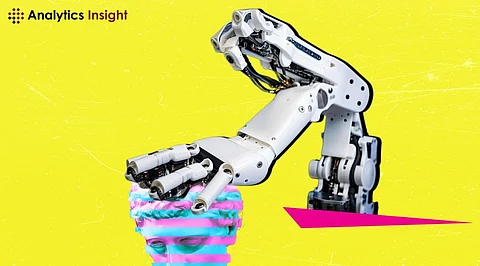

In the realm of robotics, the integration of artificial intelligence has paved the way for a new era of innovation, particularly in the development of home robots. These robots, designed to assist with various household tasks and improve daily living, rely on advanced technologies to navigate environments, interact with users, and perform a wide range of functions. Among the key advancements driving the evolution of home robots is the emergence of large language models (LLMs), such as OpenAI's ChatGPT series. In this article, we'll explore the pivotal role of LLMs in enhancing the capabilities of home robots and revolutionizing the way we interact with them.
Large language models are artificial intelligence systems that excel at comprehending and producing human-like prose. These models, trained on vast amounts of textual data, can comprehend natural language input, generate coherent responses, and perform a variety of language-related tasks, such as translation, summarization, and question-answering. With their impressive language capabilities, LLMs have found applications across diverse domains, including customer service, content generation, and conversational agents.
The integration of large language models with home robots represents a significant leap forward in the quest to create intelligent and user-friendly robotic assistants. By leveraging LLMs' natural language processing capabilities, home robots can understand and respond to verbal commands, engage in meaningful conversations, and provide personalized assistance to users. Whether it's scheduling appointments, answering questions, or controlling smart home devices, LLM-powered home robots offer unprecedented levels of interaction and convenience.
One of the primary benefits of incorporating large language models into home robots is the enhancement of the user experience. Traditional human-robot interactions often rely on predefined commands or rigid interfaces, limiting the scope of communication and usability. With LLMs, home robots can adapt to natural language input, allowing users to interact with them more intuitively and conversationally. This enables seamless communication and fosters a deeper sense of engagement and rapport between users and their robotic companions.
Another advantage of LLM-powered home robots is their ability to contextualize and personalize interactions based on user preferences and previous interactions. By analyzing conversational context and user history, LLMs can tailor responses and recommendations to suit individual needs and preferences. For example, a home robot equipped with an LLM can learn users' preferences for music, news, or entertainment and proactively offer relevant suggestions or updates. This personalized approach enhances user satisfaction and fosters long-term engagement with the robot.
In addition to facilitating natural language interactions, LLM-powered home robots excel at automating tasks and providing assistance with various household chores and activities. From setting reminders and managing schedules to helping with cooking or cleaning tasks, these robots can act as capable assistants, freeing users from mundane or time-consuming activities. Moreover, LLM-powered home robots can learn from user feedback and adapt their behavior over time, becoming increasingly proficient at anticipating and fulfilling user needs.
While the integration of large language models with home robots offers numerous benefits, it also raises important ethical and privacy considerations. As these robots collect and handle enormous volumes of user data, questions about data privacy, security, and permission become crucial. Developers must implement robust privacy safeguards and transparent data policies to ensure user trust and compliance with regulatory requirements. Moreover, efforts to mitigate biases and ensure fairness in LLM algorithms are essential to prevent unintended consequences or discriminatory outcomes.
Large language models are a game-changing breakthrough in the realm of home robotics, allowing for more natural and intuitive interactions between humans and robots. By harnessing the power of LLMs, home robots can understand and respond to human language with unprecedented accuracy and sophistication, enhancing the user experience and expanding the range of tasks they can perform.
Join our WhatsApp Channel to get the latest news, exclusives and videos on WhatsApp
_____________
Disclaimer: Analytics Insight does not provide financial advice or guidance on cryptocurrencies and stocks. Also note that the cryptocurrencies mentioned/listed on the website could potentially be scams, i.e. designed to induce you to invest financial resources that may be lost forever and not be recoverable once investments are made. This article is provided for informational purposes and does not constitute investment advice. You are responsible for conducting your own research (DYOR) before making any investments. Read more about the financial risks involved here.
